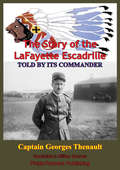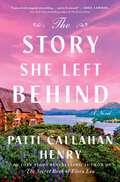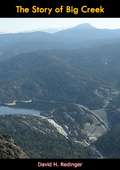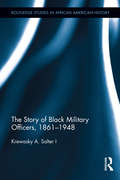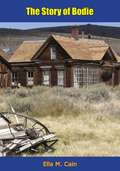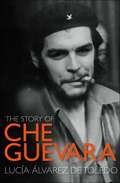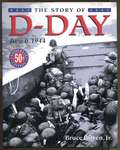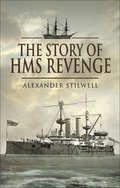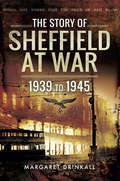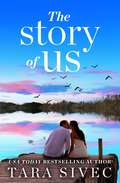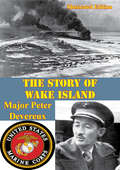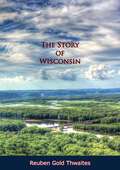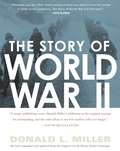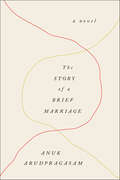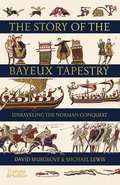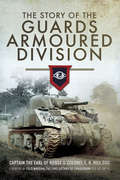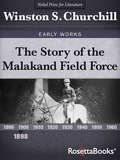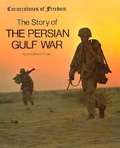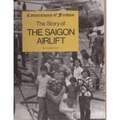- Table View
- List View
The Story Of The Lafayette Escadrille Told By Its Commander
by Captain Georges Thenault"Aces over the Western FrontThe Lafayette Escadrille is now a legend of early aeronautics and warfare in the air. Originally titled the Escadrille Americaine, this squadron of the French Air Force of the Great War was formed in 1916 and as it name suggests was piloted mainly by Americans who came to the Western Front to fight the battle of the skies for the Allies out of conviction--in the hope of encouraging the United States to join the fray--or simply in the spirit of adventure. The élan of this crack squadron has survived it and today its Indian chief insignia is instantly recognisable. There have been several books concerning the Lafayette Escadrille, but this one has unimpeachable credentials since its author was none other than the unit's commander. Few readers interested in the subject of this book will need explanation as to its contents."-Leonaur Print Version
The Story She Left Behind: A Novel
by Patti Callahan HenryThe New York Times bestselling author of The Secret Book of Flora Lea returns with a novel spanning three generations of women about a famous lost book, a famous lost mother, and an artist searching for both.In 1927, in Bluffton, South Carolina, a famous American—former child prodigy author Bronwyn Newcastle Fordham—disappears, abandoning her eight-year-old daughter and husband. She leaves behind a sequel to her children&’s fantasy blockbuster about a young girl named Emjie who is caught between worlds. But the sequel is written in the author&’s secret and untranslatable created language. Now in 1952, Bronwyn&’s lost words have been discovered in a private library in England by a man called Charlie Jameson. Bronwyn&’s daughter, Clara Harrington, a children&’s book illustrator and divorced mother of one, goes on a quest to England to retrieve the lost words of her mother, words she believes will translate the sequel and help her discover what happened and why her mother abandoned her. Clara takes along her own eight-year-old daughter, Winnie, who is precocious, funny, and wise, and who has an imaginary friend, also called Emjie, after her lost grandmother&’s novel. But when Clara and Wynnie sail to England, they arrive during one of London&’s greatest natural disasters—the Great Smog. Wynnie is a fragile child with asthma and the air is deadly. Charlie Jameson helps them escape London and make their way to his family&’s country home in the Lake District, where the tale unfolds in the wild and glorious landscape of Esthwaite Water and the land of Beatrix Potter. It is there that the tangled roots that tie Charlie and Clara together will be revealed, and the fate—not only of Emjie, but of Bronwyn herself—will come to light.
The Story of American Bank Note Company
by William H GriffithsThis is the classic reference on the ABNCo written by William H. Griffiths. It covers the time period from 1795 - 1958 within its 92 pages. Many engraved portraits and vignettes are included.ONE HUNDRED SIXTY-THREE YEARS AGO the organization that is now the American Bank Note Company first took root. One hundred years ago the skills, resources and goodwill of seven distinguished firms were combined to form a unique institution which throughout the years has been accorded the confidence of business men and government officials in most of the countries of the world, and which has dedicated itself to meriting that confidence.The carefully preserved records of the Company must in great part remain confidential, in accordance with its long-established policy, for the protection of its customers. But the material that does not relate to the affairs of its customers—whether corporations or governments—or is already in the public domain yields a story which I believe will be interesting to all who are concerned with documents of value, and perhaps also to others who find romance and inspiration in the achievements of the men who have built America’s greatness.
The Story of Big Creek
by David H. RedingerNature never intended Southern California to be anything but desert, so they said. But settlers turned it into farms, factories and living areas for millions of people.The key to that development was 300 miles north, in the High Sierra, where the company that became the Southern California Edison Company undertook the creation of one of the great water power developments in the world.They called it Big Creek.Completed in 1929, this work of engineering art involved six dams, eight tunnels (one 13 miles long), three major artificial lakes and five powerhouses—all created to ensure electric power for a rapidly growing Los Angeles and suburbs.Author David H. Redinger was Resident Engineer for the Big Creek Hydroelectric Project, one of the most extensive in the world. In this fascinating book, he recounts the obstacles encountered in building a railroad in the High Sierra, from carving roads and tunnels through rough terrain, to enduring snowstorms at high altitudes, and generally accomplishing near-miracles with brainpower, mulepower, steampower, and manpower.
The Story of Black Military Officers, 1861-1948 (Routledge Studies in African American History)
by Krewasky A. Salter IBlack members of the military served in every war, conflict and military engagement between 1861 and 1948. Beyond serving only as enlisted soldiers and non-commissioned officers, many also served as commissioned officers in positions of leadership and authority. This book offers the first complete and conclusive work to specifically examine the history of black commissioned officers.
The Story of Bodie
by Ella M. Cain Donald I. SegerstromFirst published in 1956, this is a history of California’s official state gold rush ghost town, which was designated a National Historic Landmark in 1961, and in 1962 became Bodie State Historic Park.The account is written by Ella M. Cain, a native of Bodie, whose father-in-law James S. Cain and family owned much of the land the town is situated upon and had hired caretakers to protect and to maintain the town’s structures following its decline in 1914.“Bodie deserved and sustained its reputation of being the most lawless, the wildest and toughest mining camp the Far West has ever known.”—Ella M. Cain
The Story of Che Guevara
by Lucia Alvarez de ToledoChe Guevara is something of a symbol in the West, a representative of Sixties counterculture and the face adorning the T-shirts of a million student radicals. But in the rest of the world he is something else: a charismatic revolutionary who redrew the political map of Latin America and gave hope to those resisting colonialism everywhere.Lucia Alvarez de Toledo comes from the same social milieu as Che Guevara; born and raised in Buenos Aires, she was at school while he attended university, and then as a journalist she closely followed his meteoric political rise. As a result she is able to put him into context like few others among his biographers, dispelling numerous popular misconceptions and revealing aspects to his life which have been missed before. Based on interviews with Che's family and those who knew him intimately, this is an accessible biography that concentrates on the man rather than the icon. With the political developments in Latin America in the twenty-first century, Guevara's influence can be seen to be even greater than it was during his lifetime.
The Story of D-Day: June 6, 1944 (50th Anniversary Edition)
by Bruce BlivenJune 6, 1944: The greatest amphibious invasion the world had ever seen was launched, involving thousands of ships, incredible planning and preparation, and a million courageous soldiers, sailors, and airmen willing to sacrifice their lives for victory. Author and journalist Bruce Bliven was there that day, on the beaches of France, and he recounts it all, from the risky plans developed by the American and British military leaders through the daring landing itself. Most important, he shares stories of individual bravery shown by soldiers who waded or parachuted ashore in what became the turning point of the war.
The Story of HMS Revenge
by Alexander StilwellThis sweeping naval history chronicles the many British vessels to bare the name Revenge, from the sixteenth-century galleon to the twentieth-century submarine. The glory years of the Royal Navy can be glimpsed between Sir Francis Drake&’s Revenge and the Polaris submarine of the same name, built four centuries later. In its various forms, Revenge was at the Armada, the Azores, Trafalgar, and Jutland and with weapons capable of terrible destruction. The first Revenge, a 46-gun galleon launched in 1577, symbolized the boldness and flair of that period. Commanded by the legendary Drake, it was faster and more maneuverable than the massive Spanish galleons. Many years later, the mighty 25,000-ton battleship was representative of the strength of the British Empire at its peak. The first Revenge would have comfortably fitted across the beam of this battleship. More than a study of these mighty ships, The Story of the HMS Revenge describes their commanders and crews as well. Illustrated throughout, it captures the flavor of life on board and details technological developments, and of course, the actions in which they were involved.
The Story of Sheffield at War: 1939 to 1945
by Margaret DrinkallThis is a unique account of the impact that the Second World War had on the city of Sheffield. Soon after the declaration of war, the government and the people of Sheffield realized that the Germans would make the city one of their prime targets, due to the importance of the steel industry. Also, for the first eighteen months of the war Sheffield had the only drop hammer in the country, which was capable of producing Rolls Royce crankshafts for Spitfire and Hurricane aircraft. Using contemporary diaries, letters, police accounts and other archive material, this book reveals how, despite heavy bombing, the people of Sheffield refused to be intimidated. It looks at the events that were happening in the city during the countdown to the war, such as the evacuation of the children not only to other safer districts, but to the Dominions, and the development of the Sheffield Home Guard, who started out as 'Dads Army' but were sent to London to relieve its Home Guard when the capital was under heavy fire from German rockets. Also included is a description of the protection of the dams above Sheffield and how the Ladybower reservoir was used as a training ground for the 'Dambusters'. Finally, there are accounts not only of Sheffield men who were taken as prisoners of war, but how the police dealt with the German and Italian prisoners at Lodge Moor Camp.
The Story of Us: A heart-wrenching story that will make you believe in true love
by Tara SivecHow much can a man take before he breaks?1,843 days. That's how long I survived in that hellhole. They tried to break me, but I resisted. And I owe it all to the memory of warm summer nights, the scent of peaches, and the one woman who loved me more than I ever deserved to be loved. Now, I'll do anything to get back to her. Only Shelby Eubanks isn't the girl I left behind all those years ago. She's someone else, a stranger. My Shelby-my little green-eyed firecracker-would never give up her dreams, would never disappear into her mother's ambitions. But I won't give up on her. On us. I may be broken, and scarred, and not the man I used to be, but I will do whatever it takes to remind her of the story of us.
The Story of Wake Island [Illustrated Edition]
by James P. S. Devereux Colonel U.S.M.C.Includes 11 photos and 5 maps/diagrams of the Defence of Wake Island"It is Monday, 8 December 1941. On Wake Island, a tiny sprung paper-clip in the Pacific between Hawaii and Guam, Marines of the 1st Defense Battalion are starting another day of the backbreaking war preparations that have gone on for weeks. Out in the triangular lagoon formed by the islets of Peale, Wake, and Wilkes, the huge silver Pan American Airways Philippine Clipper flying boat roars off the water bound for Guam. The trans-Pacific flight will not be completed."Word of war comes around 0700. Captain Henry S. Wilson, Army Signal Corps, on the island to support the flight ferry of B-17 Flying Fortresses from Hawaii to the Philippines, half runs, half walks toward the tent of Major James P.S. Devereux, commander of the battalion's Wake Detachment. Captain Wilson reports that Hickam Field in Hawaii has been raided."Devereux immediately orders a "Call to Arms." He quickly assembles his officers, tells them that war has come, that the Japanese have attacked Oahu, and that Wake "could expect the same thing in a very short time" Robert Cressman.So began the epic 14 day siege of Wake Island in 1941, on one side the overwhelming numbers and firepower of the invading Japanese on the other Major Devereux and a handful of Marines aided by civilian contractors and miscellaneous personnel. In this memoir Devereux recounts how he and his men put up a resistance that stunned their Japanese foes, and provided their American countrymen with a potent positive rallying point after the attack at Pearl Habor.
The Story of Wisconsin
by Reuben Gold ThwaitesThis is a short history that profiles the Badger State, which became part of the U.S. in 1848 but had settlements decades earlier. It also looks at the Native American history of the state.“Reuben Gold Thwaites (1853-1913) was a librarian, historian and editor. He attended public schools, and, after moving to Oshkosh in 1866, put himself through a "college course" while teaching school and working on local farms. He worked for a time on various newspapers in the Oshkosh area, and in 1874 enrolled in Yale University as a graduate student in history and economics.Returning to Wisconsin two years later, Thwaites settled in Madison, where he served for a time as managing editor of the Wisconsin State Journal. In 1885 he became assistant to Lyman C. Draper (q.v.), corresponding secretary of the State Historical Society of Wisconsin, and when Draper retired in Jan., 1887, Thwaites succeeded him as executive officer of the Society; he served in this capacity from 1887 until his death. His energy in historical undertakings, and his ability as an administrator made the Society one of the leading organizations of its kind in the country, and made Thwaites "the best known non-political man in Wisconsin."Thwaites' own scholarly reputation rested primarily upon his skill as an editor of historical documents. Among the more important projects completed by Thwaites and his corps of assistants during his years with the Society were The Jesuit Relations and Allied Documents (73 vols.), Lewis and Clark Journals (8 vols.), Early Western Travels (32 vols.), and Collections of the State Historical Society (vols. 11-20).”-Wisconsin Hist.
The Story of World War I
by John MalamWorld War I was the world's first "total war." Although large-scale wars like the Napoleonic wars had ranged across many territories, the scale of the World War I was unprecedented. It was also the first war between modern, industrialized nations and mechanized warfare saw new and terrifying weapons deployed for the first time, including airplanes, tanks, zeppelins, giant warships, and poison gas. Now, on the verge of the centenary of the start of World War I, this fact-packed information book relates the unfolding events and the human stories in a way that brings history vividly to life.
The Story of World War II: Revised, expanded, and updated from the original t
by Henry Steele Commager Donald L. MillerDrawing on previously unpublished eyewitness accounts, prizewinning historian Donald L. Miller has written what critics are calling one of the most powerful accounts of warfare ever published.Here are the horror and heroism of World War II in the words of the men who fought it, the journalists who covered it, and the civilians who were caught in its fury. Miller gives us an up-close, deeply personal view of a war that was more savagely fought—and whose outcome was in greater doubt—than readers might imagine. This is the war that Americans at the home front would have read about had they had access to the previously censored testimony of the soldiers on which Miller builds his gripping narrative. Miller covers the entire war—on land, at sea, and in the air—and provides new coverage of the brutal island fighting in the Pacific, the bomber war over Europe, the liberation of the death camps, and the contributions of African Americans and other minorities. He concludes with a suspenseful, never-before-told story of the atomic bombing of Nagasaki, based on interviews with the men who flew the mission that ended the war.
The Story of World War One
by Richard BrasseyIt began 100 years ago. They said it would be over by Christmas. They were wrong! Read about the tanks and trenches, bombs and battlefields that make up the chilling story of World War One. Did you know that German Zeppelins were made from cow intestines, the same material as sausage skins, so sausages were banned in Germany? Or that the fighting was stopped on Christmas Day 1914, so that German and British soldiers could play football in no man's land? Discover these facts, and so much more, in this fascinating book.Richard Brassey, author of the successful THE STORY OF THE OLYMPICS, brings World War One to life in this unique take on the history and events of one of the 20th century's most important episodes. Full of wonderful, full-colour illustrations and interesting stories, this is a timely addition to existing books on the subject that will interest even the most reluctant readers.
The Story of a Brief Marriage: A Novel
by Anuk Arudpragasam“The tale of two strangers suddenly thrust into a strange new relationship . . . an immersive portrait of life touched by war and despair.” —BuzzFeed (“Incredible New Books You Need to Read This Fall”)Shortlisted for the Dylan Thomas PrizeTwo and a half decades into a devastating civil war, Sri Lanka’s Tamil minority is pushed inexorably towards the coast by the advancing army. Amongst the evacuees is Dinesh, whose world has contracted to a makeshift camp where time is measured by the shells that fall around him like clockwork. Alienated from family, home, language, and body, he exists in a state of mute acceptance, numb to the violence around him, till he is approached one morning by an old man who makes an unexpected proposal: that Dinesh marry his daughter, Ganga. Marriage, in this world, is an attempt at safety, like the beached fishing boat under which Dinesh huddles during the bombings. As a couple, they would be less likely to be conscripted to fight for the rebels, and less likely to be abused in the case of an army victory. Thrust into this situation of strange intimacy and dependence, Dinesh and Ganga try to come to terms with everything that has happened, hesitantly attempting to awaken to themselves and to one another before the war closes over them once more.Anuk Arudpragasam’s The Story of a Brief Marriage is a feat of extraordinary sensitivity and imagination, a meditation on the fundamental elements of human existence. Set over the course of a single day and night, this unflinching debut confronts marriage and war, life and death, bestowing on its subjects the highest dignity, however briefly.
The Story of the Battle of the Bulge (Cornerstones of Freedom)
by R. Conrad SteinDetails the Germans' last big offensive to reverse the course of World War II at the end of 1944.
The Story of the Bayeux Tapestry: Unraveling The Norman Conquest
by Michael Lewis David MusgroveThe definitive and fully illustrated guide to the Bayeux Tapestry. The full history of the events leading up to the Battle of Hastings and the story of the tapestry itself. Most people know that the Bayeux Tapestry depicts the moment when the last Anglo-Saxon king of England, Harold Godwinson, was defeated at the Battle of Hastings in 1066 by his Norman adversary William the Conqueror. However, there is much more to this historic treasure than merely illustrating the outcome of this famous battle. Full of intrigue and violence, the tapestry depicts everything from eleventh-century political and social life—including the political machinations on both sides of the English Channel in the years leading up to the Norman Conquest—to the clash of swords and stamp of hooves on the battle field. Drawing on the latest historical and scientific research, authors David Musgrove and Michael Lewis have written the definitive book on the Bayeux Tapestry, taking readers through its narrative, detailing the life of the tapestry in the centuries that followed its creation, explaining how it got its name, and even offering a new possibility that neither Harold nor William were the true intended king of England. Featuring stunning, full- color photographs throughout, The Story of the Bayeux Tapestry explores the complete tale behind this medieval treasure that continues to amaze nearly one thousand years after its creation.
The Story of the Guards Armoured Division
by The Earl of Rosse E. R. HillFormed in June 1941, the Guards Armoured Division proved that Household Troops could adapt their legendary high standards to a totally new role. Deploying to Normandy in 1944 under Major General Sir Allan Adair, the Division acquitted itself with distinction in the costly Operation GOODWOOD.After the breakout, the Welsh Guards liberated Brussels on 3 September and the Division played a leading role in Operation MARKET GARDEN.In early 1945, the Division fought in Operation VERITABLE, breaking General Schlemms lateral line near Menzelen. The Rhine crossing followed, with the Guards Armoured leading XXX Corps towards Bremen and Hamburg. Guardsman Edward Charlton, Irish Guards, severely wounded, broke up a counterattack and earned the last VC of the European war.The Story of The Guards Armoured Division is a classic account of the Divisions superb fighting record.
The Story of the Malakand Field Force: An Episode Of Frontier War (Winston S. Churchill Early Works)
by Winston S. ChurchillIn this early work, the future Prime Minister recounts his observations as a young war correspondent in late 19th century British Colonial India. In 1897, Winston Churchill was a 22-year-old subaltern in the 4th Hussars, stationed in Bangalore. Seeking military distinction, he talked his way onto the Malakand Field Force to battle indigenous tribes after meeting the commander, Sir Bindon Blood, at a social engagement. There were no openings for junior officers—but Churchill convinced the commander to allow him to come along as a war correspondent. And thus a great career was born. This book shows the determination and spirit that would later mature into the indomitable personality of Winston Churchill in his prime. While not as polished as his later work, it is still elegantly crafted--and shows a brash willingness to criticize military leaders, including Lord Kitchener himself. It is one of Churchill's more rare works; until a new edition was published in 1990, it had been out of print in English since 1916.
The Story of the Persian Gulf War (Cornerstones of Freedom)
by Leila Merrell FosterExamines the causes and events of the Persian Gulf War that followed Iraq's invasion of Kuwait in 1990.
The Story of the Saigon Airlift (Cornerstones of Freedom)
by Zachary KentDescribes that dramatic helicopter airlift, the largest in history, which during two days in 1975 carried thousands of Americans and selected South Vietnamese out of Saigon as the North Vietnamese marched to capture the city, thus ending the long Vietnam War.
The Story of the Sinking of the Battleship Maine (Cornerstones of Freedom)
by Zachary KentDiscusses the mysterious sinking of the battleship Maine and the subsequent involvement of the United States in the Spanish-American War.
The Story of the U. S. S. Arizona (Cornerstones of Freedom)
by R. Conrad SteinRecalls the events surrounding the Japanese surprise attack on Pearl Harbor during which the U.S.S. Arizona sank.
